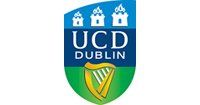
MS Introduction to windows and Using Emails professionally Course
Course ID: 2508040106731ESH
Course Dates : 04/08/25 Course Duration : 5 Studying Day/s Course Location: London, UK
Language: Bilingual
Course Category: Computer Science Programmes
Course Subcategories: Microsoft Office Mastery
Course Certified By: ESHub CPD & LondonUni - Executive Management Training
* Professional Training and CPD Programs
Certification Will Be Issued From :
From London, United Kingdom
Course Fees: £5,120.30
Vat Not Included in the price. VAT may vary depending on the country where the course or workshop is held.
Click to Pay
Date has passed please contact us Sales@e-s-hub.com
Course Information
Introduction
In an era where digital literacy is foundational to professional success, mastering the use of operating systems and email communication has become indispensable. Microsoft Windows remains one of the most widely used operating systems across industries, serving as the backbone for countless business operations. Despite its ubiquity, many professionals lack a comprehensive understanding of its features, shortcuts, and security protocols, leading to inefficiencies and vulnerabilities. This course addresses these gaps by equipping participants with practical skills to navigate Windows effectively while fostering professional email practices that align with modern workplace standards.
Email communication, often considered a basic skill, is frequently underutilized in terms of its potential for enhancing productivity and professionalism. Miscommunication, poor formatting, and inadequate security measures are common pitfalls that can harm organizational reputation and workflow efficiency. Drawing on frameworks such as Shannon and Weaver’s Communication Model, which emphasizes clarity and feedback loops, this course teaches participants how to craft emails that convey messages succinctly and professionally. Real-world examples, such as the 2013 Target data breach caused by phishing emails, underscore the importance of secure and thoughtful email practices.
The relevance of this course extends beyond individual proficiency; it directly impacts organizational performance. A study by McKinsey & Company revealed that employees spend approximately 28% of their workweek managing emails. By streamlining email processes and leveraging Windows tools, organizations can reduce time wastage and improve overall output. Furthermore, as remote and hybrid work models continue to dominate, the ability to manage files, collaborate virtually, and communicate effectively via email becomes even more critical. This course bridges the gap between technical know-how and interpersonal communication, empowering participants to thrive in evolving work environments.
Key challenges addressed in this course include the lack of structured training on Windows functionalities and the absence of standardized email etiquette guidelines. Many professionals rely on self-taught methods or outdated practices, which can lead to errors, inefficiencies, and breaches. For instance, failing to organize files systematically within Windows can result in lost documents, while poorly written emails may cause misunderstandings or damage client relationships. Through hands-on exercises and case studies, participants will learn how to overcome these obstacles and adopt best practices tailored to their roles.
Mastering the content of this course offers dual benefits: personal growth and organizational advancement. On an individual level, participants will gain confidence in navigating complex tasks, from managing system settings to drafting polished emails. Organizations, in turn, benefit from enhanced productivity, reduced IT support requests, and improved internal and external communications. For example, a marketing team trained in efficient file management and email composition can streamline campaign execution, ensuring timely delivery and consistent branding.
Ultimately, this course is designed to transform routine tasks into opportunities for excellence. Whether you are a newcomer to the workforce or a seasoned professional seeking to refine your skills, the curriculum provides actionable insights grounded in industry trends and technological advancements. By the end of the program, participants will not only have mastered essential tools but also developed a mindset geared toward continuous improvement and adaptability.
Objectives
By attending this course, participants will be able to:
Analyze the core functionalities of Microsoft Windows and apply them to optimize daily workflows.
Evaluate different email platforms and implement strategies for secure and efficient communication.
Design well-structured emails using appropriate tone, format, and language to enhance professionalism.
Apply advanced file management techniques within Windows to ensure data organization and accessibility.
Implement cybersecurity measures to protect sensitive information during email exchanges.
Synthesize knowledge of Windows shortcuts and tools to increase operational efficiency.
Reflect on real-world scenarios to troubleshoot common issues related to email and system usage.
Who Should Attend?
This course is ideal for:
Entry-level employees transitioning into office-based roles requiring frequent computer use.
HR managers and administrative staff responsible for maintaining clear and compliant communication channels.
Consultants and freelancers who rely heavily on email correspondence and document sharing.
Educators and trainers looking to integrate digital tools into their teaching methodologies.
These groups will find value in the course due to its focus on bridging technical and communicative competencies, enabling them to perform their duties more effectively. The course is particularly suited for beginners or those with intermediate experience, as it assumes no prior expertise in Windows or email protocols but progresses to advanced applications.
Training Method
• Pre-assessment
• Live group instruction
• Use of real-world examples, case studies and exercises
• Interactive participation and discussion
• Power point presentation, LCD and flip chart
• Group activities and tests
• Each participant receives a 7” Tablet containing a copy of the presentation, slides and handouts
• Post-assessment
Program Support
This program is supported by:
* Interactive discussions
* Role-play
* Case studies and highlight the techniques available to the participants.
Daily Agenda
Daily Schedule (Monday to Friday)
- 09:00 AM – 10:30 AM Technical Session 1
- 10:30 AM – 12:00 PM Technical Session 2
- 12:00 PM – 01:00 PM Technical Session 3
- 01:00 PM – 02:00 PM Lunch Break (If Applicable)
- Participants are expected to engage in guided self-study, reading, or personal reflection on the day’s content. This contributes toward the CPD accreditation and deepens conceptual understanding.
- 02:00 PM – 04:00 PM Self-Study & Reflection
Please Note:
- All training sessions are conducted from Monday to Friday, following the standard working week observed in the United Kingdom and European Union. Saturday and Sunday are official weekends and are not counted as part of the course duration.
- Coffee and refreshments are available on a floating basis throughout the morning. Participants may help themselves at their convenience to ensure an uninterrupted learning experience Provided if applicable and subject to course delivery arrangements.
- Lunch Provided if applicable and subject to course delivery arrangements.
Course Outlines
Introduction to Windows Fundamentals
Overview of Windows Interface and Navigation Basics
Understanding File Explorer and Folder Structures
Customizing Settings for Personalized Productivity
Introduction to System Security Features
Day 2:
Advanced Windows Tools and Shortcuts
Mastering Keyboard Shortcuts for Efficiency
Utilizing Built-in Applications (e.g., Notepad, Paint)
Managing Storage Space and Backups
Troubleshooting Common System Issues
Day 3:
Foundations of Professional Email Communication
Principles of Effective Email Writing
Crafting Subject Lines and Signatures for Impact
Understanding Email Etiquette Across Cultures
Organizing Inboxes for Maximum Efficiency
Day 4:
Secure and Compliant Email Practices
Identifying Phishing Attempts and Scams
Encrypting Emails and Protecting Sensitive Data
Adhering to GDPR and Other Compliance Standards
Using Email Filters and Rules for Automation
Day 5:
Integrating Windows and Email Skills for Workflow Optimization
Syncing Calendars and Task Lists with Email Platforms
Collaborating Through Shared Drives and Cloud Services
Automating Repetitive Tasks Using Macros and Scripts
Final Project: Applying Learned Skills in Simulated Scenarios



















































